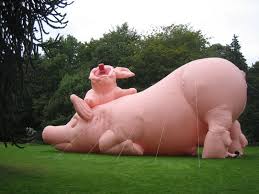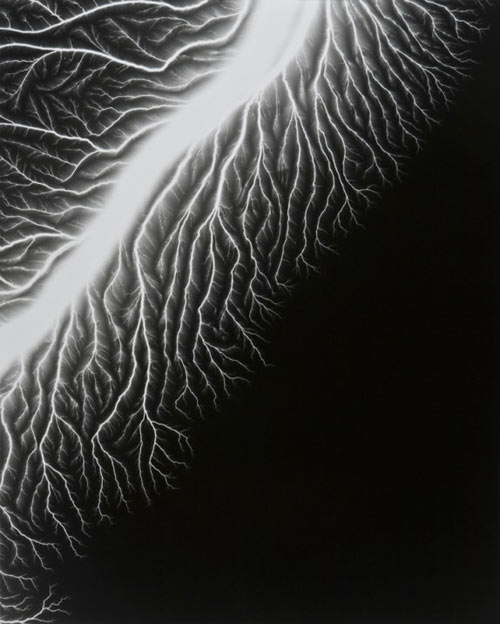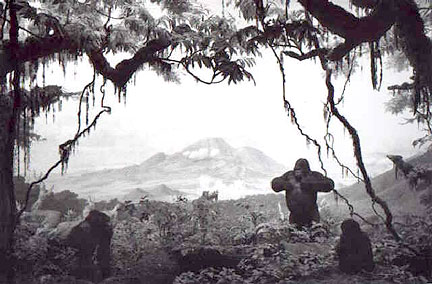
My first post EVER and first artist of the week is Paul McCarthy.
Contemporary transgressive performance artist, McCarthy was born in Salt Lake City in 1945. He received his BFA in painting from the San F(un)cisco Art Institute and his MFA at UCLA in film and video art where he would later teach.
Paul McCarthy misleadingly is often considered to be influenced by the Viennese Actionism
. Although by his own statement the happenings of the group were known to him in the 1970s, he sees a clear difference between the self-injurious actions of the Viennese and his own performances: "Vienna is not Los Angeles. My work came out of kids' television in Los Angeles. I didn' t go through Catholicism and World War II as a teenager, I didn't live in a European environment. People make references to Viennese art without really questioning the fact that there is a big difference between ketchup and blood. I never thought of my work as shamanistic. My work is more about being a clown than a shaman."
Paul McCarthy's video-taped performances and provocative multimedia installations lampoon polite society, ridicule authority, and bombard the viewer with a sensory overload of often sexually-tinged, violent imagery. With irreverent wit, McCarthy often takes aim at cherished American myths and icons—Walt Disney, the Western, and even the Modern Artist—adding a touch of malice to subjects that have been traditionally revered for their innocence or purity. Absent or present, the human figure is a constant element in his work, whether in the form of bodies in action, satirical caricatures, or animistic sculptures; as the residue of a private ritual; or as architectural space left uninhabited for the viewer to occupy. Whether conflating real-world political figures with fantastical characters such as Santa Claus, or treating erotic and abject content with frivolity and charm, McCarthy's work confuses codes, mixes high and low culture, and provokes an analysis of fundamental beliefs.
Certainly Mr. McCarthy’s earliest work is grounded in postwar art history. For his first performance, in 1966, he and a friend tried to recreate Yves Klein’s 1960 photocollage “Leap Into the Void” sight-unseen by jumping feet first out a window. Many of his other early performances also recalled Klein using his body as a paintbrush — as in “Face Painting — Floor, White Line” (1972), in which he pushed his face and body against an overturned bucket of white paint and smeared it along the floor. Sometimes he painted with his penis or used ketchup, mayonnaise or feces as the medium. In the catalog for Mr. McCarthy’s retrospective, Lisa Phillips, the director of the New Museum, described such materials as metaphors “for the primal substances of life — blood, pus, urine, feces, sperm, milk, sweat,” erasing the boundary between the “interior of the body and the exterior world.” (Over time, she added, Mr. McCarthy had evolved a “signature palette,” involving ketchup, mayonnaise and chocolate syrup — all things that are “emblematic of American family life.”)
Soon Mr. McCarthy was also using props, like ketchup bottles, masks and Barbie dolls and other toys, which pushed him in a new direction. “A lot of times,” he said, “I would be down low looking at a toy during a performance, and I would think, ‘Oh, a sculpture.’ So in the ’70s I had this idea of blowing up toys into sculptures.” By 1983 “I had this idea that I was going to move toward making lifelike figures, sculptures and architecture, but lifelike figures that were kinetic or robotic, like Disney figures,” he said. “The robotic figures could also be a way to replace my performance.”
And then there were his so-called performance installations, like “Painter” from 1995. “Out of that comes videos, sculptures and drawings,” Mr. McCarthy said. “And then along comes the idea to build a larger set, which is a town.” And so on.
In the early 1980s he resumed drawing for its own sake. And when the image of the spread-eagle woman suddenly returned last year, he experienced a revelation. “In nearly all of these,” he said, sounding emotional, “the Snow White is personal because it becomes Karen.” As in his early drawings, he said, the figures of his recent Snow White series are “Karen when we were young.”
As Mr. McCarthy talks about his work, it’s almost as though the different decades and strands — performance, sculpture, video, installation — are happening simultaneously. For him they are: “When I’m making a piece, it’s five, six different things at all the same time,” he said. “One leads to another, and it doesn’t stop here. They’re still going on.” (That’s also why he resists interviews. “They’re too literal,” he said, “and too full of histories.”)
He also seems to have the complete freedom to walk through his subconscious almost as if it were a stage set, while letting it do the work. Take his long-running fascination with the Alps. Several of his works have been set there, like “Heidi, Midlife Crisis Trauma Center and Negative Media-Engram Abreaction Release,” a notorious 1992 installation and video he created in collaboration with Mike Kelley, in which Heidi, Johanna Spyri’s Swiss heroine, is put through surprising travails involving her grandfather and a goat.
Mr. McCarthy said that he had been drawn to Alpine culture since childhood because he did a lot of mountain climbing while growing up outside Salt Lake City. “I was really interested in mountain culture from a really early age,” he said. “I think it was something about foreign lands or something — you know how you live in small towns and you want to leave.” Later, after reading Wilhelm Reich, his old childhood passion became twinned with thoughts of
Hitler, Fascism and Bavaria.
“I don’t know how things exactly rise up,” he said. “But I start thinking about a subject, and then I sort of realize things about it.” With Heidi it had been the concept of patriarchy, and with Snow White it was “this house in the woods, the Prince, the love story, the dwarves, the cave, all these archetypes that interest me.”
“And then I start making the drawings,” he said. “And then, you know, it starts.”






.JPG)





